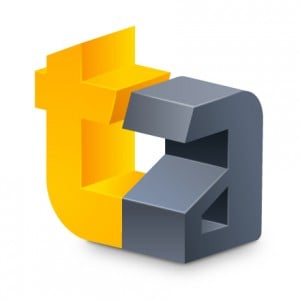 Hello, gentle readers, and welcome to the RPG Reload. This week, we’re continuing our little monthly project looking at the history of handheld RPGs. That means that we will not be taking a look at a specific RPG from the App Store’s past this time around. Last month, we looked at the brief but impressive reign of the Game Boy Advance, and the bounty of RPGs it brought with it. While it was mostly uncontested during its life, seeds were being planted in unexpected places that would sprout into the fiercest competition Nintendo would face to date of this writing. We’ll be looking at those nooks and crannies today as best as we can. In total, this feature will span twelve columns, each one taking a look at a specific era in handheld RPGs. I hope you enjoy reading them as much as I’ve enjoyed researching and writing them! Please let me know what you think by commenting below, posting in the Official RPG Reload Club thread, or by tweeting me at @RPGReload. If you like this project and wish to support endeavors like it, please consider contributing to the TouchArcade Patreon. It’s what makes these kinds of big features possible.
Hello, gentle readers, and welcome to the RPG Reload. This week, we’re continuing our little monthly project looking at the history of handheld RPGs. That means that we will not be taking a look at a specific RPG from the App Store’s past this time around. Last month, we looked at the brief but impressive reign of the Game Boy Advance, and the bounty of RPGs it brought with it. While it was mostly uncontested during its life, seeds were being planted in unexpected places that would sprout into the fiercest competition Nintendo would face to date of this writing. We’ll be looking at those nooks and crannies today as best as we can. In total, this feature will span twelve columns, each one taking a look at a specific era in handheld RPGs. I hope you enjoy reading them as much as I’ve enjoyed researching and writing them! Please let me know what you think by commenting below, posting in the Official RPG Reload Club thread, or by tweeting me at @RPGReload. If you like this project and wish to support endeavors like it, please consider contributing to the TouchArcade Patreon. It’s what makes these kinds of big features possible.
It should go without saying that tabletop, computer, console, handheld, and mobile games are all inextricably tied with each other in various ways. To consider how other platforms contributed to handheld RPGs in these articles would grow them well beyond the scope I’m able to deal with. I’ll be mentioning some influences here and there, but this is basically a disclaimer that I’m aware handheld RPGs don’t exist in a vacuum, in spite of the relatively narrow historical focus of these articles.
The History Of Handheld RPGs, Part Six – The Rocky Beginnings Of Mobile RPGs

Nintendo’s Game Boy Advance had little in the way of competition, but that doesn’t mean that no one tried. It’s just that those that did never really had what it took to even be entertained as a serious threat to Nintendo. Of the companies who tried to take on Nintendo during the Game Boy Advance years, only one had even the smallest chance of carving out any marketshare: Nokia. The company is in poor condition these days, but they were at one time the dominant force in the mobile phone industry, with a seemingly bright future ahead of it. Their bid to enter the dedicated video game market may not have gone well, but it’s hard to say where mobile gaming would be if not for Nokia’s efforts in general.
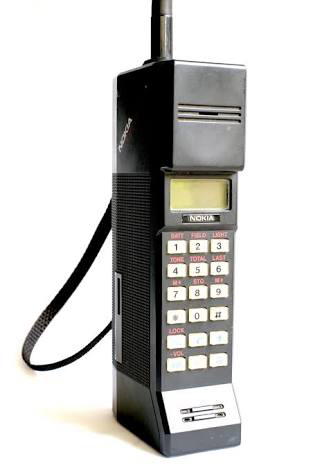 Founded in Finland in 1871 as a forestry and power generation company, Nokia started to shift towards the networking and radio business in the late 1960s. That’s relevant to what we’re looking at here, but Nokia was a company with its fingers in many pies. They made gas masks, communicators, radios, chemicals, and more during the next couple of decades before taking the important first steps on the road to their domination and downfall in the cell phone business. In 1979, they formed a joint venture with a television maker called Solara and, a few years later, released their first mobile phone, the Mobira Senator car phone. Over the course of the next several years, Nokia sold or spun off most of its other businesses, choosing to focus on the communications market. In 1987, they launched their first mobile phone that was completely portable, the Mobira Cityman 900. By 1998, Nokia had become the most successful mobile phone brand, a title they would hold for the next few years.
Founded in Finland in 1871 as a forestry and power generation company, Nokia started to shift towards the networking and radio business in the late 1960s. That’s relevant to what we’re looking at here, but Nokia was a company with its fingers in many pies. They made gas masks, communicators, radios, chemicals, and more during the next couple of decades before taking the important first steps on the road to their domination and downfall in the cell phone business. In 1979, they formed a joint venture with a television maker called Solara and, a few years later, released their first mobile phone, the Mobira Senator car phone. Over the course of the next several years, Nokia sold or spun off most of its other businesses, choosing to focus on the communications market. In 1987, they launched their first mobile phone that was completely portable, the Mobira Cityman 900. By 1998, Nokia had become the most successful mobile phone brand, a title they would hold for the next few years.
The reason why we’re talking about Nokia and not, say, Motorola is that Nokia was far more important to mobile gaming’s history than any of their competitors. With their decision to pre-install the game Snake onto all of their phones from 1997 onward, Nokia effectively got the ball rolling for people to mess around on their phones in the restroom. People who even mighty Nintendo had failed to reach were suddenly playing Snake or simple card games on their mobile phones when they needed to kill a few minutes during their days. The technology was incredibly limited at the time, and games could only be installed by the manufacturer, but it was a start. Within a few years, hardware had advanced considerably, with sharper full-color displays and expanded memory, both largely in service of the camera capabilities that were being added to mobiles at the time. Software was no longer solely in the hands of the phone manufacturers, with mobile carriers now able to provide various applications that users could download to their phones. Also importantly, phones with Java support started to be released. With that, mobile gaming started to take off, albeit at different speeds in each region.
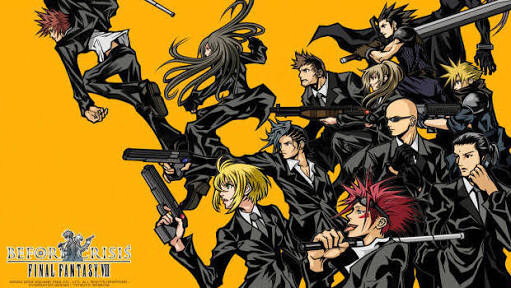
Japan proved to be the most fertile ground early on. For a variety of reasons I don’t have the space to go into, mobile hardware advanced more quickly in that country, and mobile gaming fit the Japanese lifestyle more comfortably. Major Japanese gaming companies like Namco, Square Enix, and SEGA were rolling out games in the early 2000s, with titles such as Ridge Racer, Dragon Quest, Final Fantasy, and Puyo Puyo getting mobile ports alongside occasional releases of original titles. Smaller companies like Kemco who had been largely priced out of the console market found new life on mobile phones, releasing relatively low-budget games that yielded solid returns. Square Enix made big waves when they announced a number of mobile-exclusive titles, spearheaded by Before Crisis: Final Fantasy 7. An action-RPG prequel to Final Fantasy 7, Before Crisis follows the Turks as they battle against the terrorist group AVALANCHE. Seen as one of the better parts of the Compilation Of Final Fantasy 7 project, Before Crisis was perhaps one of the first times traditional gamers found themselves envious of a mobile-only release. The game was a major success in Japan, but was never localized for other markets.
Curiously, traditional game publishers in other regions were a bit slower to wade into the mobile market, at least directly. In Europe, one of Ubisoft’s founders established Gameloft in the year 2000, while the same year in the United States, a few ex-Activision executives set up JAMDAT Mobile. Gameloft would eventually make numerous forays into the RPG genre over the years, most notably with their popular Dungeon Hunter series, but in the beginning, they were focused on other genres. JAMDAT, on the other hand, released several RPGs in those early days. Of particular note is DOOM RPG, a clever role-playing take on the classic first-person shooter. Zenimax also indirectly got in the mix with their Vir2L Studios brand, through which they released a few Elder Scrolls spin-offs known collectively as The Elder Scrolls Travels.
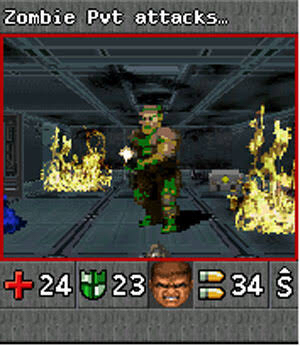
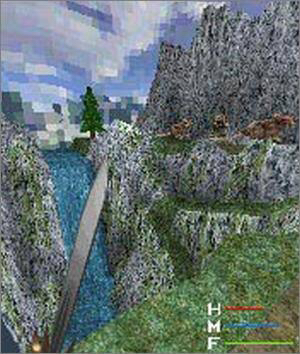
In 2003, Nokia made a major gamble. Mobile gaming was proving to be fairly popular already, and some very wise people were looking down the road and seeing a potential convergence of handheld and mobile gaming. As one of the leaders of the mobile phone market, why shouldn’t Nokia be the one to lead the way? So it was that in October of 2003, Nokia launched their mobile phone/handheld console hybrid, the N-Gage. It’s hard to say if they were too far ahead of their time with the idea or if they just executed it poorly, but things didn’t go very well. Though the hardware was powerful in comparison to the Game Boy Advance, the software line-up was pretty poor all around, offering very little in the way of compelling exclusives. The N-Gage itself had some major flaws in its design. Changing games required the player to remove the battery cover, the buttons felt more like the flimsy type found on a phone’s dialing pad than the type traditional players were used to, and it wasn’t particularly well-suited as a phone, either. Its $299 price tag, while more than reasonable for a mobile phone, was ridiculously high in comparison to the $99 Game Boy Advance.
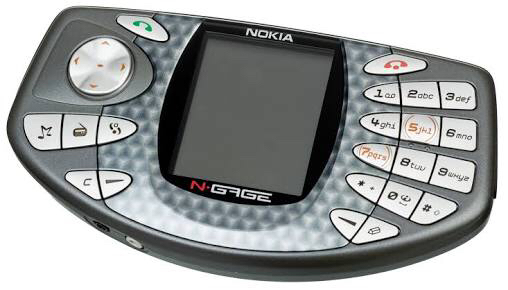
In spite of strong marketing around the launch period, the prevailing message around the N-Gage was one of mockery. It was a taco phone, a Frankenphone, only good as a prop for goofy side-talking pictures. Within three weeks, most major retailers were marking the price of the main unit down by as much as $100. While the N-Gage would see a redesign and wouldn’t officially be discontinued until late 2005, it was effectively dead in the water one month after its launch. Sony’s first official showing of the PSP the following May would have put the final nail in the coffin if the poor thing weren’t already six feet under. Nevertheless, the N-Gage built a large library with a few solid titles in it. For RPG fans, there were three titles of note. The final Elder Scrolls Travels game, Shadowkey, released in late 2004. A port of Nihon Falcom’s PC game Xanadu Next was released in early 2005, and even got an English release. The best RPG on the system was probably SEGA’s Pocket Kingdom, however. A simple yet satisfying online RPG, its solid mechanics combined with a clever script made it a favorite of many N-Gage owners.
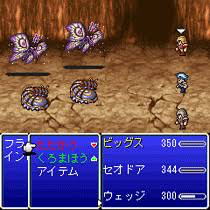 While the N-Gage had dealt an embarrassing blow to Nokia and the idea of mobile phone gaming, it certainly didn’t hurt business all that much. The traditional gaming companies outside of Japan were starting to test the waters, with the establishment of EA Mobile and their subsequent purchase of JAMDAT sending a signal that one of gaming’s biggest publishers saw some potential in the market. In Japan and Korea, markets where the N-Gage was essentially unheard of, things had just kept on building. Gamevil and Com2Us were making money hand over fist in South Korea, and Japanese companies old and new were finding considerable success domestically. Square Enix was releasing titles on a regular basis. Many of those games were ports, but there were also original games like Final Fantasy 4: The After Years and Front Mission 2089. Unfortunately, almost none of these Japanese games got English releases in their original forms, and only a handful of the South Korean games ever left their borders. An RPG treasure trove, to be sure, but one that is largely lost to time.
While the N-Gage had dealt an embarrassing blow to Nokia and the idea of mobile phone gaming, it certainly didn’t hurt business all that much. The traditional gaming companies outside of Japan were starting to test the waters, with the establishment of EA Mobile and their subsequent purchase of JAMDAT sending a signal that one of gaming’s biggest publishers saw some potential in the market. In Japan and Korea, markets where the N-Gage was essentially unheard of, things had just kept on building. Gamevil and Com2Us were making money hand over fist in South Korea, and Japanese companies old and new were finding considerable success domestically. Square Enix was releasing titles on a regular basis. Many of those games were ports, but there were also original games like Final Fantasy 4: The After Years and Front Mission 2089. Unfortunately, almost none of these Japanese games got English releases in their original forms, and only a handful of the South Korean games ever left their borders. An RPG treasure trove, to be sure, but one that is largely lost to time.
We’re going to leave mobile phone games at this point for now. The Nintendo DS and Sony PSP had released in late 2004 and early 2005, and it’s hard to talk much about what came next for mobile before we take a good look at those two systems. I do want to make a short detour at this point to discuss another important format for handheld RPGs. Whether you want to call them handheld computers, PDAs, or ham sandwiches, devices like the Palm Pilot, Apple Newton, and Windows Mobile Pocket PCs presented the first widespread touch-based interfaces for handheld games. They were a natural fit for a certain type of RPG, and given their popularity among gadget fans and tinkerers, it was inevitable that someone would fulfill that potential.
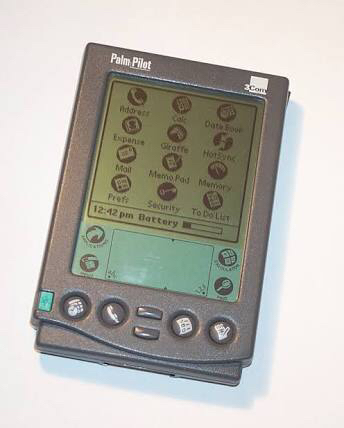 There’s a decent selection of RPGs for PDAs, and in many ways they informed smartphone RPGs just as much as feature phone RPGs did. The most recognizable for iOS RPG fans are likely The Quest and its predecessor Legacy, created by Redshift. Earlier than those, before PDAs had color displays, there were games like Dragon Bane, Secret Of The Orb, Kyle’s Quest, and Dark Haven. Naturally, there was also a version of Rogue, as well as a port of the classic Telengard. Some of these games, or sequels to them, were even ported to iOS in the early days of the platform, though few of them are available today. Compared to mobile phone RPGs of the time, these PDA RPGs tended to be deeper and more involved experiences. Both types of RPGs would serve as the basis of early smartphone RPGs, but that’s another chapter.
There’s a decent selection of RPGs for PDAs, and in many ways they informed smartphone RPGs just as much as feature phone RPGs did. The most recognizable for iOS RPG fans are likely The Quest and its predecessor Legacy, created by Redshift. Earlier than those, before PDAs had color displays, there were games like Dragon Bane, Secret Of The Orb, Kyle’s Quest, and Dark Haven. Naturally, there was also a version of Rogue, as well as a port of the classic Telengard. Some of these games, or sequels to them, were even ported to iOS in the early days of the platform, though few of them are available today. Compared to mobile phone RPGs of the time, these PDA RPGs tended to be deeper and more involved experiences. Both types of RPGs would serve as the basis of early smartphone RPGs, but that’s another chapter.
It’s enough for now to say that neither mobile phones nor PDAs had everything they needed to step into the ring with dedicated handheld consoles when it came to gaming. Thanks to the disastrous failure of the N-Gage, it would be a long time before most people would again entertain the idea of mobile as a serious contender in the handheld gaming market. If anyone was going to cook Nintendo’s goose, it was going to be the unbeatable Sony and their marvelous PlayStation Portable. An immediate media darling that wowed everyone who saw it, the PSP had the same air of a champion about it that the PlayStation 2 did. For all their prior domination in the handheld market, Nintendo suddenly looked like they had a reason to sweat. Clearly unprepared for Sony to come in as aggressively and quickly as they did, Nintendo countered by showing what appeared for all the world to be a hastily cobbled-together, under-powered piece of gimmicky junk. The mockery came almost as swiftly and ferociously as it had for the N-Gage, and Sony’s victory seemed inevitable to all but the most ardent of Nintendo fans.
Well, everyone is wrong now and then.
Shaun’s Five For The Early Mobile Era
For each part of this series, I’ll be selecting five notable or interesting titles to highlight. If you’re looking to get a good cross-section of the era in question, these picks are a good place to start.
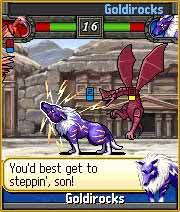 Pocket Kingdom – It’s described as an MMO RPG, but it’s really more of a simple online strategy RPG. Pocket Kingdom feels like it draws from the Dragon Force series of SEGA Saturn SRPGs, also from from SEGA. You gather, train, and improve your army, then take them into battle against other generals and their armies. Its playful tone and solid mechanics make Pocket Kingdom one of the highlights of the N-Gage line-up.
Pocket Kingdom – It’s described as an MMO RPG, but it’s really more of a simple online strategy RPG. Pocket Kingdom feels like it draws from the Dragon Force series of SEGA Saturn SRPGs, also from from SEGA. You gather, train, and improve your army, then take them into battle against other generals and their armies. Its playful tone and solid mechanics make Pocket Kingdom one of the highlights of the N-Gage line-up.
Elder Scrolls Travels: Shadowkey – Despite suffering from some severe technical issues, Shadowkey does a fairly decent job of capturing the feel of the early Elder Scrolls installments. The combat isn’t great, but when is it ever when it comes to Elder Scrolls? The exploration certainly hits the spot, at least, and since this is the last time we’ve seen Elder Scrolls on a handheld, Shadowkey is definitely of interest to the handheld RPG fan.
Final Fantasy 4: The After Years – It’s not a great game, or even a good one, but The After Years is without a doubt a symbol of its era. From its heavily recycled assets to its piece-meal episodic nature, The After Years expressed all too clearly how much Square Enix was willing to invest in original feature phone games. The original version of the game is at least faster than the modern 3D port, even if it doesn’t look quite as good. That said, if you really want to play this, I’d recommend the PSP version.
DOOM RPG – Even though it’s a little old, DOOM RPG is still a lot of fun to play. It was interesting to see such a fast-paced game changed into a turn-based RPG, and it worked out quite well. It was also one of the rare games that played decently on a numerical keypad. Sadly, it didn’t get ported around quite as much as it should have, but if you have the means to play it, I’d certainly recommend it.
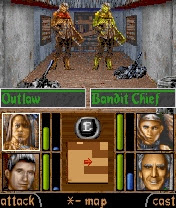 Legacy – Essentially the predecessor to The Quest, Legacy is very familiar for fans of that game. One big difference is that you control a full party of characters rather than just an individual hero. It’s worth playing if you enjoyed The Quest and are interested in its roots. There’s even a PC version you can buy from Redshift’s website if you can deal with the low resolution.
Legacy – Essentially the predecessor to The Quest, Legacy is very familiar for fans of that game. One big difference is that you control a full party of characters rather than just an individual hero. It’s worth playing if you enjoyed The Quest and are interested in its roots. There’s even a PC version you can buy from Redshift’s website if you can deal with the low resolution.
That’s all for part six of our on-going History Of Handheld RPGs feature. Please let me know what you think by commenting below, posting in the Official RPG Reload Club thread, or by tweeting me at @RPGReload. As for me, I’ll be back next week with a look at Coldfire Keep ($4.99). Thanks as always for reading!
Next Week’s Reload: Coldfire Keep